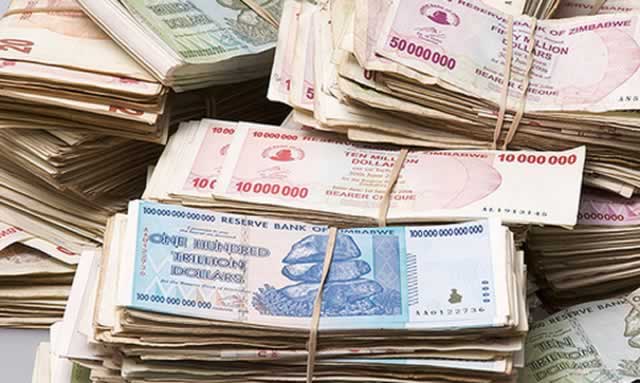Zim dollar: More than the economics

 Panganai Kahuni Correspondent
Panganai Kahuni Correspondent
Apiece by Ngoni Nhamoinesu Chivizhe (The Herald, July 11 2014) in response to the one by this writer on the issue of the Zim dollar, reminds one of how some people take economic analysis to be a preserve of economists. People must remember that economics as a social science is a discipline whose theories and principles are not cast in stone.
To say anyone engaged in an economic discourse, who someone views as a non-economist, cannot impart economic wisdom is both unscholarly and absurd. It may be worthwhile to attend to points raised by the economics lecturer on the key question of the Zim dollar which has once again reared its head following Finance Minister Patrick Chinamasa’s pronouncements on the untenability of the multi-currency system.
The first point from Chivizhe’s critique is that no initiated economist knows of any theory or process where a type of currency has a casual effect on productivity and market price which can be deducted using visual analysis.
The effect of liquidity crunch currently being experienced is not casual and can be deducted using visual analysis of what is practically happening in the economy.
The effect of the 2008 hyperinflation was not casual and could be deducted using visual analysis on what was happening in the economy that time.
If people cannot visually analyse what they see and feel about the effects of an economic activity, then economics ceases to be a social science.
The second point raised by Chivizhe was on the “high appetite on US dollar”. He wrongly tells the nation that I wanted to say “high demand”.
There is high appetite for the US dollar because the current economic policy does not have a strategic plan of bringing back this country’s sovereign currency.
Policy makers need a strategic framework that drives away from using other nation’s currencies to that of using the Zim dollar and how to protect it from inflationary attacks. Increased gold production, removal of punitive licensing fees and the gradual introduction of Zim dollar was given as the option.
This can be economically critiqued, improved or adopted in the context of bringing confidence to our own currency. Chivizhe should not apply economic theories in a lock, stock and barrel fashion leading to rigidity.
The other point raised by the economics lecturer whose analysis was given out of context was non-productive ventures such as shaving, milling and transporting services. This seemingly dinosaurian economics lecturer wrongly presented his idea in relation to the productivity nature that I inferred on this point.
In my article I clearly stated that the country does not need to use foreign currency to pay for shaving, milling and transporting services. Whilst shaving, milling and transport services are productive ventures, payment for the services given is not productive and does not require foreign cur- rency.
The economic lecturer must understand that these are productive ventures which do not pay tax hence their contribution to the fiscus and national economy is very little to warrant use of the US dollar.
You need thousands of rural grinding mills and barber shops to equal contributions made by Delta Beverages, for example, in terms of employment, generating of tax revenue and contribution to the economy.
Chivizhe observes that “it was not prudent to abandon the US dollar and bring back the Zim dollar as the whole economy will crumble to hitherto uncharted levels of economic quagmire”.
The point to be made here is not the abandonment of the US dollar but only the need to increase gold production to levels that make the country get re-admitted by London Bullion Marketers.
The re-admission into this institution guarantees the Government of the best gold prices and gets better international rating which we can use to hedge the Zim dollar.
Tied to this is the need to reduce the punitive licensing and royalty fees in order to increase gold production.
The country stands to benefit more if it reduces licensing fees and royalties with the objective of increasing gold production which should result in huge earnings. Currently, the country is benefiting less from the licensing and royalty fees which sometimes are not remitted to Treasury.
Surprisingly, too, Chivizhe told the nation not to regard the US dollar “as some special currency that only the ‘blessed’, Americans, governments and few privileged rich citizens of the world must use as the Kahunis of this world would want the nation to believe”.
The US dollar is in no way a special currency.
China and Russia are doing huge business in their own currencies.
Chivizhe claims that “Zimbabwe would be in a very traumatic economic environment as no importer would adopt the Zim dollar”.
It is to be wondered how, if there is a retiring of the US dollar in phases and the gradual introduction of the Zim dollar, hedging it on gold in the physical possession of RBZ, this would traumatise the economy!
People wonder why the importer should not sell his imported goods using a stable Zim dollar that is hedged on gold which is in the possession of RBZ.
The idea of retiring it to the bank and redistributing it to more productive industries to make them more productive is for industries to generate exportable goods. Hedging the gradual introduction of the Zim dollar on the gold bullions in physical custody of the RBZ is an economic measure targeted at giving and protecting the value of our own currency.
It is common knowledge that any stable currency gains confidence from those using it as is the case with the warring Arab countries currencies that are hedged on oil and have been stable.
It must be noted here that the use of a multi-currency basket was a strategy crafted by security institutions (non-economists) as an economic measure to allow inflow of foreign currency into the country without much production costs.
It was an economic strategy that was crafted in defence of our economy and national interests whilst economic lecturers such as Chivizhe failed to offer an economic solution to the economic problem that was bedevilling our nation.
It was interesting to note lecturer Chivizhe observing that economists never argue for the banning of the use of injection by doctors, as he sought to drive home the point that non-economists should not comment on economics.
Taking this imagery, one can point out that there has been no invention of an alternative medical method to that of using an injection for intravenous treatment of diseases. Although the use of an injection is painful, the medical benefit outweighs the pain.
It does not mean that doctors enjoy inflicting the pain on their valued customers but it is because such a method is inevitable.
If economists were to come up with a better non-painful method doctors would be more than happy and would not critique the economists for being innovative.
Panganai Kahuni is a political socio-economic commentator.








Comments